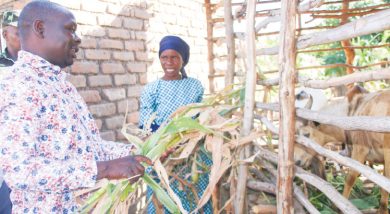Hardship allowance flops
In 2010, government introduced hardship allowance to lure and retain teachers in rural primary schools.
But trained teachers still shun remote localities in preference for urban schools although the top-up pay has doubled to K10 000.
Head teachers in some rural schools say many teachers, especially newly recruited ones, are failing to adapt to the suffering and sacrifices associated with rural conditions.
“The problem is that most teachers in rural areas live in dilapidated and substandard houses that are usually far from the school,” says Khokwa Primary School head teacher Francis Thomas Phinda.

Left frustrated
The school in remote parts of Chikwawa has seven teachers, but just two staff houses. This leaves five commuting from substandard, leaky houses with no water and electricity which they rent in nearby villages.
“Oftentimes, they complain about long distances to get to work. This is why some are fleeing to urban centres. Just last year, we lost three,” says the concerned head teacher.
The Nation caught up with a teacher who was deployed to a rural school in Ngabu, almost 50 kilometres south of Chikwawa Boma. Now, he is back to Blantyre City after just a year at Kholowa Primary School.
Trained at a Development from People to People (Dapp) college, he was jobless for a year.
He explained: “I was happy to get a job at last, but the working conditions at the rural school left me frustrated. The school is located in the remotest of places on the border between Malawi and Mozambique. Markets are far, teachers’ houses few and electricity non-existent.”
To him, K10 000 was too little to compensate for the sacrifices and difficulties that working in an off-grid community entails.
Huge workload
But Blessings Kambewa, the principal of Dowa TTC, says Dapp-trained teachers are expected to behave responsibly and courageously when they encounter such challenges.
“We always teach our trainees to put the needs of their pupils first,” he says.
According to Karonga district education manager Scotch Kondowe, most teachers are escaping far-flung schools because of marriage and the allure of urban life.
His Dedza counterpart, Sam Kalanda, says marriages, both fake and real, have left most schools with “few or no female teachers”.
The mass exodus from the rural areas has left some primary schools understaffed, increasing the workload and creating an extremely challenging teaching environment for the remnants.
But Section 5 of the Public Service Act makes the deployment of teachers dependent on vacant posts that Treasury can fund.
So distance is no excuse for migrating from rural schools, where one teacher serves up to 100 pupils.
National education guidelines require one teacher to attend to no more than 60 pupils, but the nationwide average is estimated at around 80 pupils per teacher.
Following the introduction of free primary school in 1994 and rapid population growth, enrolment has almost doubled from almost 2.8 million in 1995 to 4.9 million last year.
But the number of teachers has increased by 24.3 percent from 53 031 in 2011 to 65 932 last year.
This means one teacher in the country is attending to almost 80 pupils.
The ratio is higher in rural areas, where quality education remains a sure-fire way out of poverty.
Education activist Benedicto Kondowe faults the disbursement of hardship allowance, saying the major challenge is the criteria used to identify beneficiaries as well as lack of systems to track teachers who continue getting the top-up after leaving rural areas.
Currently, people closer to towns—even in Lunzu suburbs of Blantyre City—receive the same allowance as their friends in hard-to-reach pockets, including Chapananga in Chikwawa.
Need for reforms
The runaway teachers further widen teacher disparities between rural and urban schools.
Interestingly, the Principal Secretary for Education says his ministry has taken calls for improved deployment of teachers as an area requiring urgent reforms.
“It is expected that the reform will result in a carefully targeted and incentivised scheme that involves an objective way of classifying schools with the involvement of stakeholders in determining rural school allowance based on the remoteness of the schools,” says Ndala.





